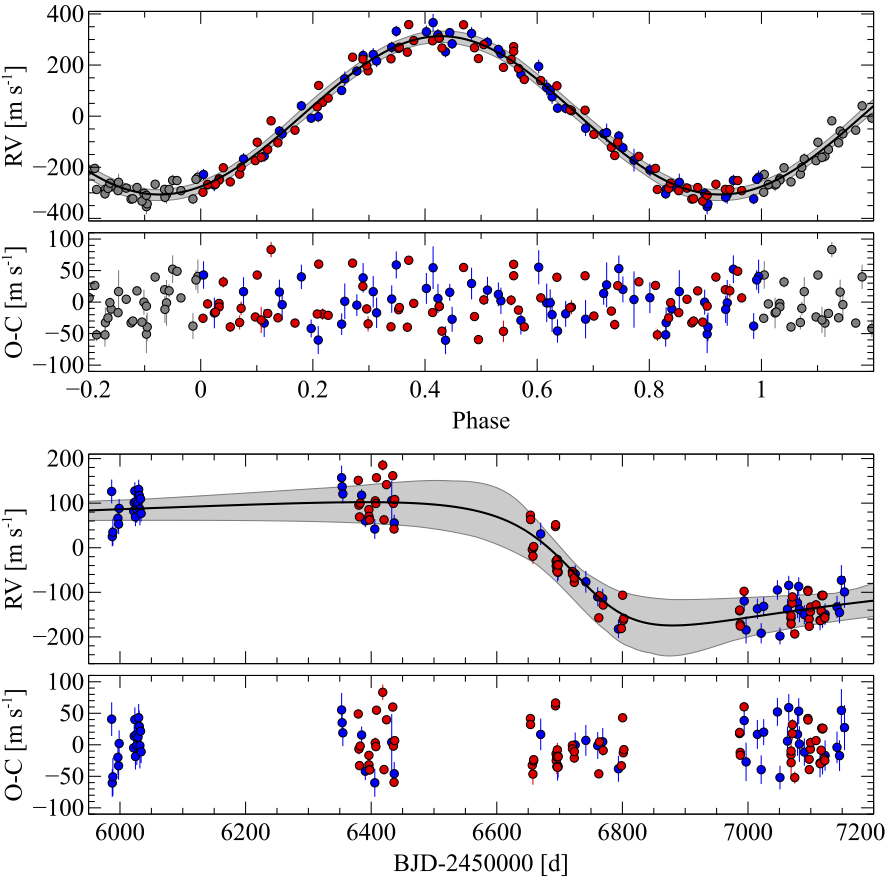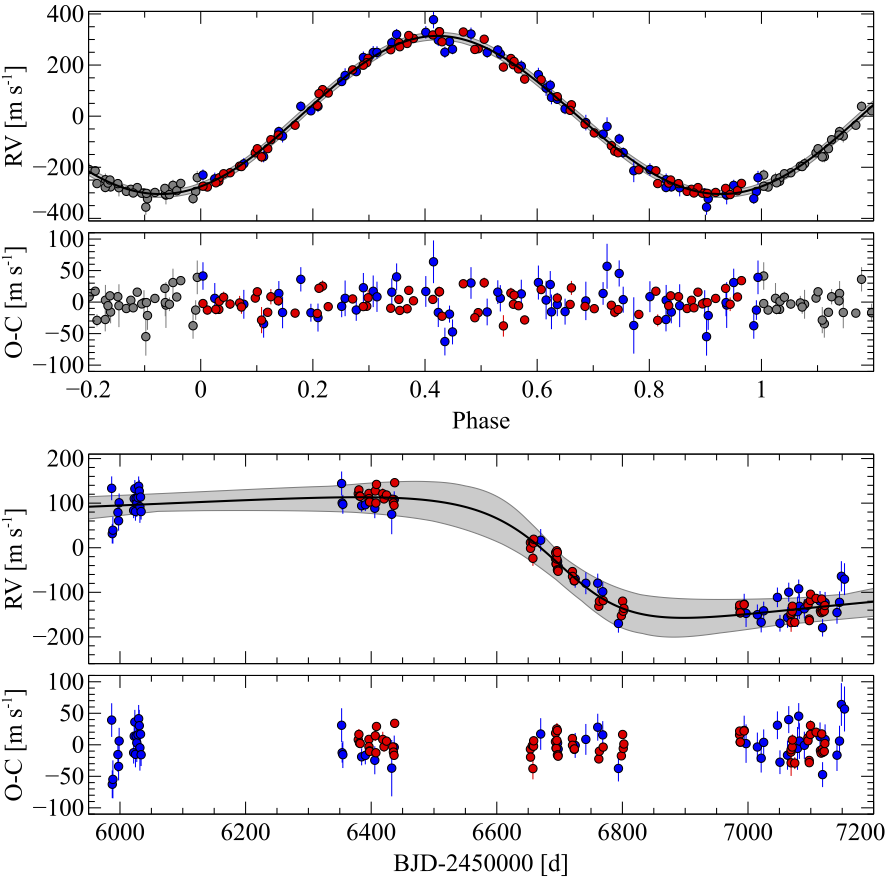The first multi-planet system in an open cluster
Open cluster stars share the same age and metallicity, and, in general, their age and mass can be estimated with higher precision than for field stars. For this reason, Open Clusters are considered an important laboratory to study the relation between the physical properties of the planets and those of their host stars, and the evolution of planetary systems. However, only a handful of planets have been discovered around Open Cluster main-sequence stars so far, all of them in single-planet systems. For this reason the GAPS group (Global Architecture of Planetary Systems) started an observational campaign to search for and characterize planets in Open Cluster.
They monitored the Praesepe member Pr 0211 to improve the knowledge of the eccentricity of the Hot-Jupiter already known to orbit this star and search for additional intermediate-mass planets. An eccentric orbit for the Hot Jupiter would support a planet-planet scattering process rather than a disk-driven migration after its formation. From 2012 to 2015, the GAPS team collected 70 radial velocity measurements with HARPS-N (the high resolution spectrograph on the Italian Telescopio Nazionale Galileo, La Palma, Canary Islands), and 36 with TRES (Tillinghast Reflector Echelle Spectrograph on the 1.5-meter Tillinghast telescope, Arizona) of Pr 0211.
Simultaneous photometric observations were carried out with the robotic STELLA telescope (Tenerife, Canary Islands), in order to characterize the stellar activity. The results of this analysis allowed to discover a long-term trend in the radial velocity residuals due to the presence of a second, massive, outer planet and confirmed that Pr 0211b has a nearly circular orbit, with an improvement of a factor two with respect to the previous determination of its eccentricity. The study also allowed to estimate the mass for Pr 0211c as almost 8 times the Jupiter mass, a period P > 3500 days and a very eccentric orbit. Such peculiar systems may be typical of open clusters if the planet-planet scattering phase leading to the formation of Hot Jupiters is caused by stellar encounters rather than unstable primordial orbits. Pr 0211 is the first multi-planet system discovered around an Open Cluster star.


Orbital solution and Radial Velocity residuals before (left panels) and after (right panels) the inclusion of activity in the global fit. The two upper panels show the Radial Velocity fit and its residuals for the inner planet, phased on its period, after removing the solution of the second planet. The two lower panels show the Radial Velocity fit as a function of time for the outer planet, after removing the solution of the inner one. Red and blue dots represent HARPS-N and TRES data, respectively. The gray shaded areas represent the 3 confidence regions.
Link at the paper.
Contact: dydat@tng.iac.es

